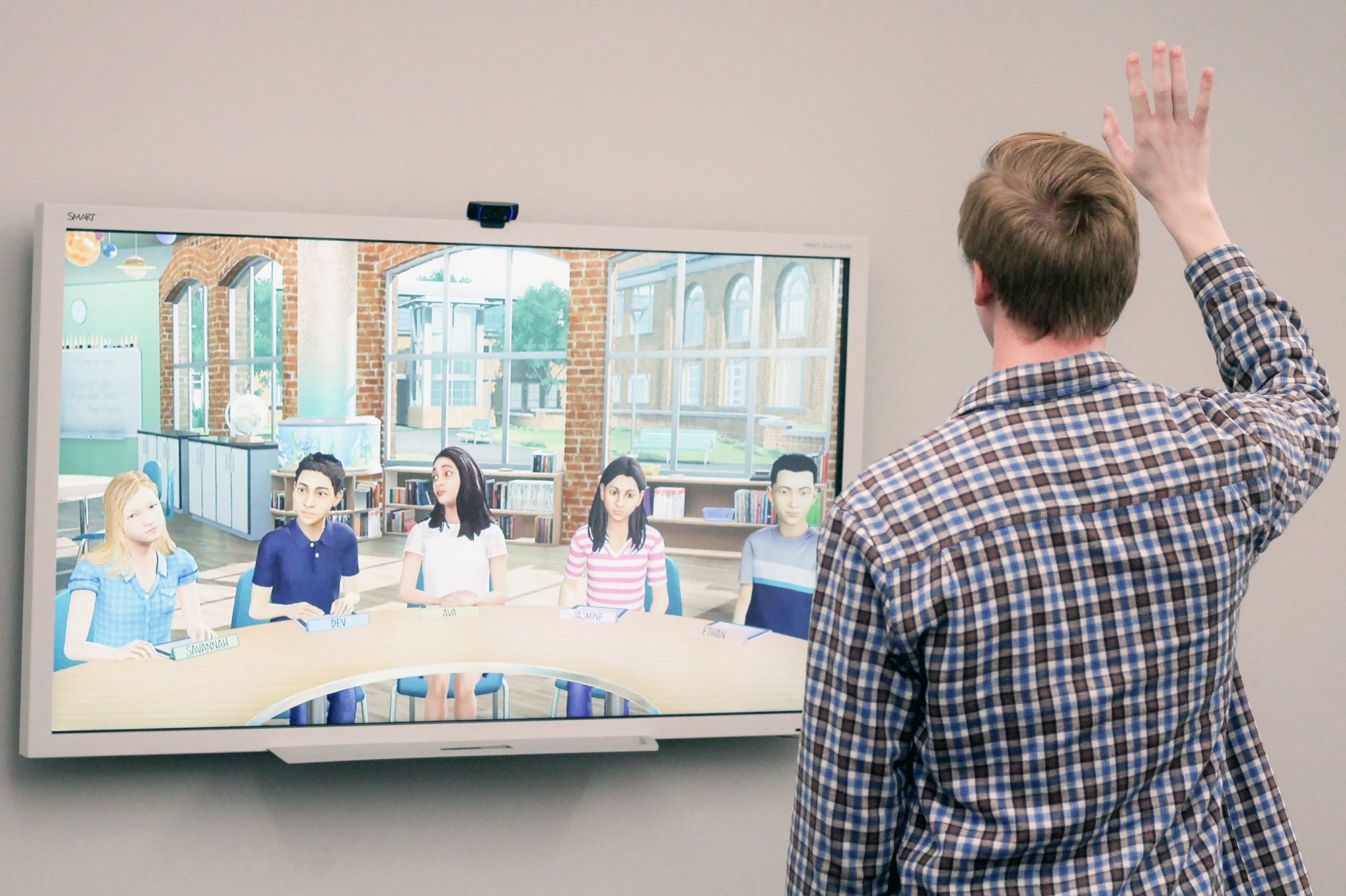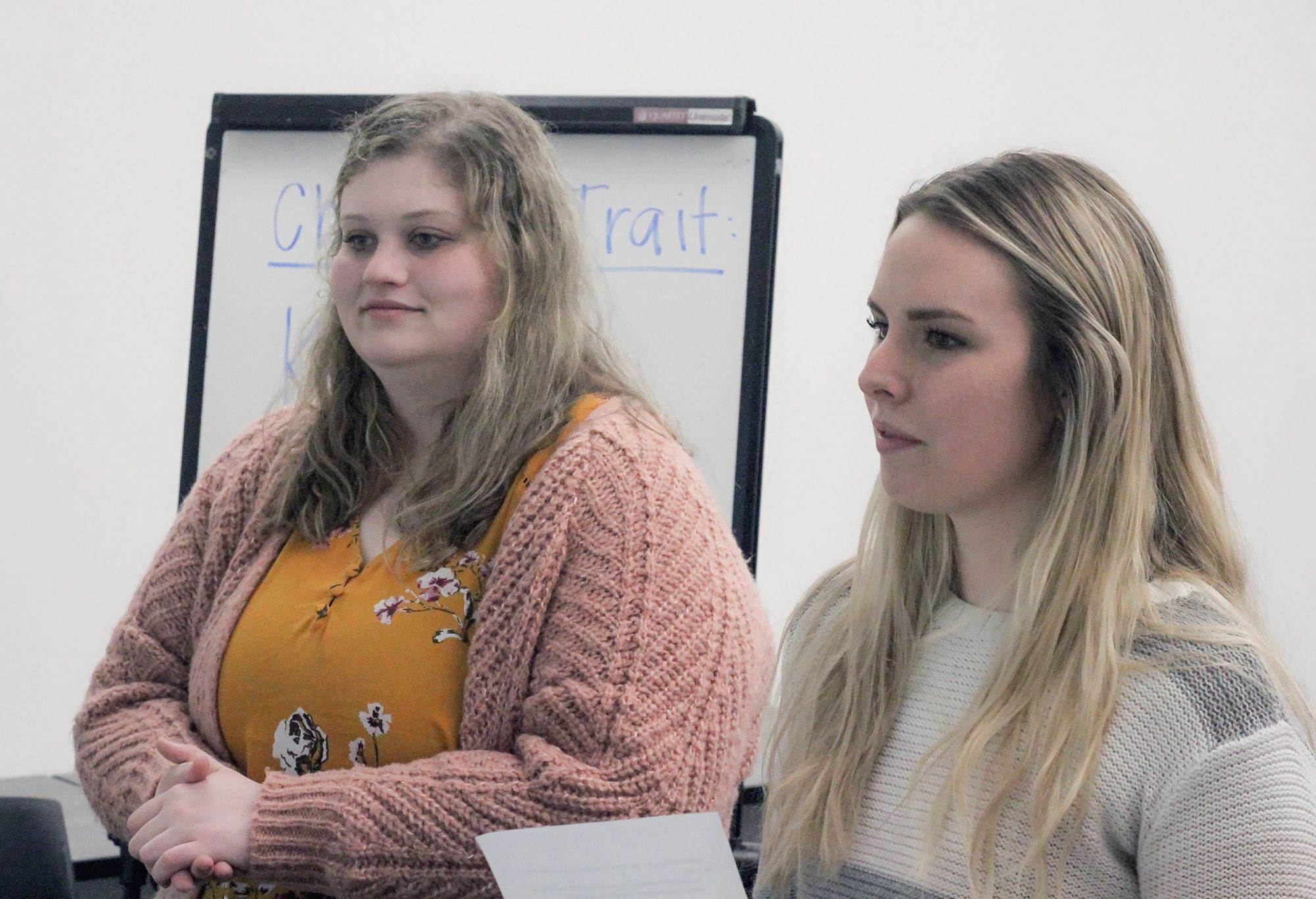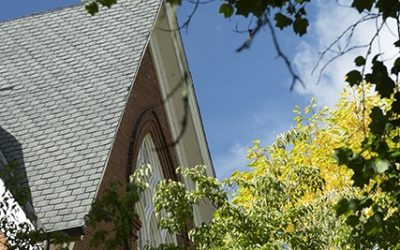Mursion Lab gives students opportunity to train in virtual classroom
As Jeremiah Price started the simulation, one of the five virtual students complimented him on his sneakers. The teacher candidate thanked the student for the compliment, but then redirected her back to the lesson.
Price then conducted a short lesson with the students, dealing with behavioral issues and keeping students on track as his instructor watched while taking notes and preparing to give him feedback on how he did in the 12-minute teaching exercise.
Price was using Western Oregon University’s Mursion Lab – a virtual classroom space that gives students in the College of Education the opportunity to apply their training in realistic situations.

Price, a senior preparing to be an elementary school teacher, said he is student teaching already, but he was still a little nervous before starting his session in the Mursion Lab during winter term 2020.
“I was able to settle in pretty quickly and pretend it was real,” he said.
He added that he got to practice a scenario he hadn’t encountered before in the real classroom – a student interrupting him to insult another student.
“It’s a fantastic opportunity to practice professional discourse and student engagement,” he said.
Dr. Maria Peterson-Ahmad, professor and special education program coordinator in the Division of Education & Leadership, said the Mursion Lab provides a sophisticated simulation for teacher training because it’s a virtual simulation with avatars, but also has a ‘human in the loop’ to customize the experience. This means each session can be customized to match the specific scope of the class or individualized skill that teacher candidates need to practice.
Peterson-Ahmad said students in the special education program, the undergraduate elementary education program and the Master of Arts in Teaching program have used the Mursion Lab, which can use avatars representing elementary, middle and high school students, or even adults.
“They call it sandbox teaching. You can customize it to the needs of the person using it.”
Peterson-Ahmad added that the lab, which opened in 2017 at WOU, was the first of its kind at a university in the Pacific Northwest. She added that the lab gives teachers-in-training a low-stakes way to apply what they are learning to realistic situations.

“If you make a mistake you can just restart it. You can’t do that with real students,” she said.
Peterson-Ahmad added that the instructors who use the Mursion Lab with their students often watch as students practice in the space and they can even pause the simulation to give the teacher candidates some coaching. She said this has an advantage over traditional classroom experience because instructors can address things immediately as they happen instead of having to wait until after a lesson.
“There is a benefit to having that layer of practice,” she said. She added that it also has another benefit: it helps teachers-in-training get accustomed to having someone observe and evaluate their work. “Getting used to feedback is powerful because you’re going to have feedback for the rest of your life,” she said.
Brooke Cross, a senior studying to be an elementary teacher who also used the Mursion Lab in Winter of 2020, said she valued using the lab because it simulated students older than the group she student teaches.
She said her session in the lab gave her a chance to apply a lot of the theories she’s been learning in the classroom.
“When you are standing there, you get sucked into the screen like you are really there,” she said.


Peterson-Ahmad said in the long run she thinks the lab may even be a resource for school districts that want to have their teachers do skills training. One example for the collaboration that is possible is a recent partnership with South Medford High School’s pathway to teaching program, which tasked high school students with developing lessons and then teaching them in the virtual classroom.
The Mursion Lab was funded in part by a grant from Collaboration for Effective Educator Development, Accountability, and Reform Center at the University of Florida. It uses software developed by Mursion, Inc., which develops similar simulation software for other industries, like health care and hospitality.



